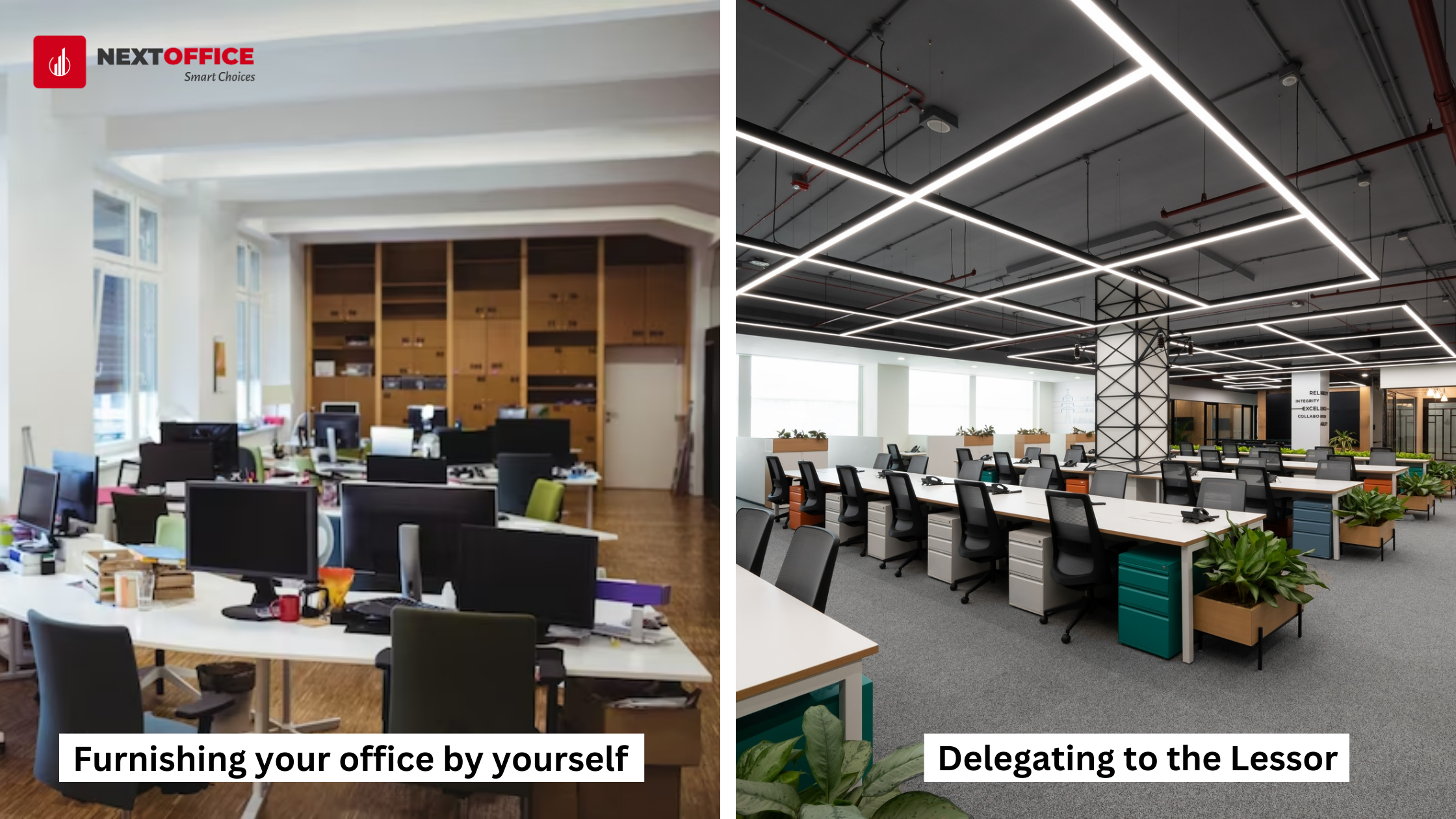Office Furnishing Dilemma: To Invest or Delegate to the Lessor?
Introduction
As businesses navigate the complexities of leasing office spaces, one crucial decision often looms large: whether to take on the responsibility of investing in the furnishing of the leased office or delegate this task to the lessor. Each option comes with its own set of advantages and considerations, and the choice depends on factors such as budget constraints, customization needs, and the long-term vision of the business. In this blog post, we'll explore the pros and cons of both approaches to help businesses make an informed decision.
Investing in Office Furnishing: Taking Control of Your Space
Advantages:
1. Tailored to Your Needs:
Opting to invest in office furnishing allows businesses to tailor the space to their specific business needs without the restrictions of a 3rd party investor. Customization options are virtually limitless, providing the flexibility to create a workspace that aligns with the company's brand, culture, and workflow. If you are investing on your own, there are no restrictions on the choice of materials and designs. A thoughtfully furnished office space can contribute to a professional and polished brand image. Clients, partners, and employees alike are likely to be impressed by a workspace that reflects the company's commitment to quality and attention to detail.
2. Long Term Cost Benefit:
If you have no problem investing upfront capex for furnishing, you avail depreciation benefit. If you amortise the same over 3 years, your effective rental post amortisation matches the bare shell rentals. So if you have a long-term vision of using the office for a longer tenure of 5 to 9 years, you considerably benefit on a leaner opex.
3. Better Negotiation Leverage:
When you intend to invest in Interiors, the prospective lessor is risk-free, have better faith in your tenancy, and lesser liability. This gives you considerable advantage in getting a great deal from the Lessor.
Considerations:
1. Upfront Costs:
While investing in office furnishings provides long-term benefits, the upfront costs can be significant. Businesses must carefully consider their budget constraints and weigh the immediate financial impact against the long-term advantages.
2. Maintenance and Repairs:
The responsibility for maintenance and repairs falls on the tenant when the furnishings are self-invested. This includes the cost and effort associated with regular upkeep and any unforeseen repairs.
Delegating to the Lessor: Letting Someone Else Shoulder the Burden
Advantages:
1. Cost Sharing:
Delegating the responsibility of furnishing to the lessor can result in cost-sharing arrangements. The lessor may absorb most or all of the upfront costs, making it a more financially feasible option for businesses with budget constraints.
2. Time and Effort Savings:
Allowing the lessor to handle the furnishing process saves businesses time and effort. There's no need to coordinate deliveries, assemble furniture, or oversee the installation of fixtures. This can be particularly beneficial for businesses focused on immediate operational needs.
Considerations:
1. Limited Customization:
Delegating furnishing to the lessor may limit customization options. Businesses might need to work within the pre-established design and layout of the space, which may not fully align with their specific needs or brand identity. The lessor would always consider a typical layout that can be rented out easily when you choose to move out.
2. Higher Operational Costs and lock-in liabilities
When Lessor invests in the furnishing, the cost of furnishing is levied on to you monthly with increased rental commitment. The risk to Lessor for an early exit of yours is mitigated with a higher lock-in period that might curtail your of the flexibility to exit in adverse business conditions.
Striking the Right Balance:
The decision to invest in office furnishing or delegate it to the lessor involves finding the right balance between customization, budget considerations, and long-term goals.
Here are some key steps to guide your decision-making process:
1. Evaluate Your Budget:
Analyze your budget constraints and determine the financial feasibility of self-investment in office furnishings.
2. Assess Customization Needs:
Consider the extent to which your business requires customization. If specific layouts or designs are crucial, self-investment might be the more suitable option.
3. Review Lease Terms:
Examine the terms of your lease agreement to understand any restrictions or requirements related to office furnishings.
4. Negotiate with the Lessor:
If considering delegation, engage in negotiations with the lessor to explore cost-sharing arrangements and discuss any specific customization needs.
5. Consult with Professionals:
Seek advice from us who can provide insights into optimizing your office space while staying within budget.
Conclusion:
Whether to invest in the furnishing of a leased office or delegate this task to the lessor is a nuanced decision that should align with the unique needs and goals of your business. By carefully weighing the advantages and considerations of both approaches, businesses can make an informed choice that sets the stage for a productive and harmonious work environment.





.png)

.png)